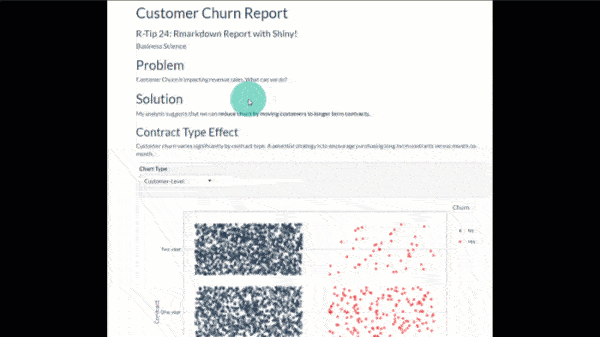

- #Download rmarkdown how to#
- #Download rmarkdown pdf#
- #Download rmarkdown install#
- #Download rmarkdown software#
- #Download rmarkdown code#
Most of the assignments you will do in this class will involve statistical computing. Once you have made your choice and downloaded RStudio, make sure you can open it! You will never need to open pure R in this class, but you will need RStudio. I have the most experience with the Desktop variant. This allows you to access R from your web browser, which means you can access R across multiple machines. The other option is to download the server version of R. You can download the desktop version of R, which will sit on your computer like Microsoft Word or any other downloaded application. To download RStudio, visit Īt this point, you have a choice. (3) Download RStudio: Once R has successfully downloaded, the next step is to download RStudio.
#Download rmarkdown software#
This simply installs the software on your computer. Note: nothing will open when you have finished the download. īased on your operating system (Linux, Mac, or PC), choose the appropriate option, and download R. (2) Download R: To download R, visit this site.


Options 2: If TinyTeX does not install, go to.
#Download rmarkdown code#
With the line of code highlighted, hit the "Run" button. Now, look at the upper right hand corner of the panel and you shold see "Run". In this space, paste this line of code: tinytex::install_tinytex() This area should currently be called "Untitled1". Look at your RStudio screen and you should be able to type in the empty panel in the upper left of your screen. Once everything has loaded, there is one last thing to do.
#Download rmarkdown install#
Your computer should begin to install TinyTeX. In the box that appears (it should be called "Packages") type tinytex. In the drop down menu for Tools, find "Install Packages". Go the the toolbar at the top and find Tools. Option 1: Download TinyTeX: You will need your RStudio open in order to download the software, so go ahead and open it. Macs, you may not be asked, and that just means your computer has chosen automatically, so you are good. If you are asked about paper size, make sure you change this preferred paper size setting from A4 to Letter, or your documents will not print properly later in the class. This is more likely for PC users than Mac users. NOTE: During the download, you may be asked about your preferred paper size.

Of the three software packages, this takes the longest to download.
#Download rmarkdown pdf#
Having either LaTex is necessary for RMarkdown to create PDF documents. (1) Download LaTex or MacTex: We will be using a reproducible research format called RMarkdown for our computing exercises. There are three things you will need to download for this course: (1) R, (2) RStudio and (3) LaTex. For those of you who have already downloaded everything, skip this next section. Before we dive into that, though, we need to download the software. We will touch on both of these concepts today. We learned in class that the choice of statistical learning technique we will use to estimate the function that connects Y and X is driven by (1) what we want to do with the data and (2) characteristics of the data set itself. The goals of today's lab are to (1) introduce RStudio and RMarkdown, (2) practice downloading data and (3) conduct EDA in R.
#Download rmarkdown how to#
They will be review on how to set-up R and RMarkdown. Go through and answer the questions, but feel free to skim the first few sections. Dalzell, you will be able to skip much of this set-up and introductory section. If you have questions, please ask! If you have taken MST 256 with Dr. No prior experience with RMarkdown is assumed. The fact that you have familiarity with R is something you can put on your resume, and can be beneficial when applying for internships and jobs.įor those who are new to R and RMarkdown, welcome! This lab is intended to be an introduction to this material so we are all on the same page as we start the class. We will work with R because it is (1) free, (2) widely-used in industry and academia and (3) highly adaptable to multiple disciplines. R, STATA, SAS, Python, MatLab and Excel are just a few examples. Why do we need to learn a computing language at all? In practice, real statistical analysis is performed using some sort of computing language. We will build the skills we need as we move through the class. We assume you have no experience with R as you come into this course, so don't worry if this language is new to you. RStudio allows us to see visualizations, explore stored data sets and create PDF documents all within the same interface. We will be working with R through an interface called RStudio. Welcome to Statistical Learning! Throughout this course, we will be using a statistical software called R to practice the statistical concepts discussed in class, to analyze real data and to make informed conclusions. Complete all Questions and submit final PDF under Assignments in Sakai.


 0 kommentar(er)
0 kommentar(er)
